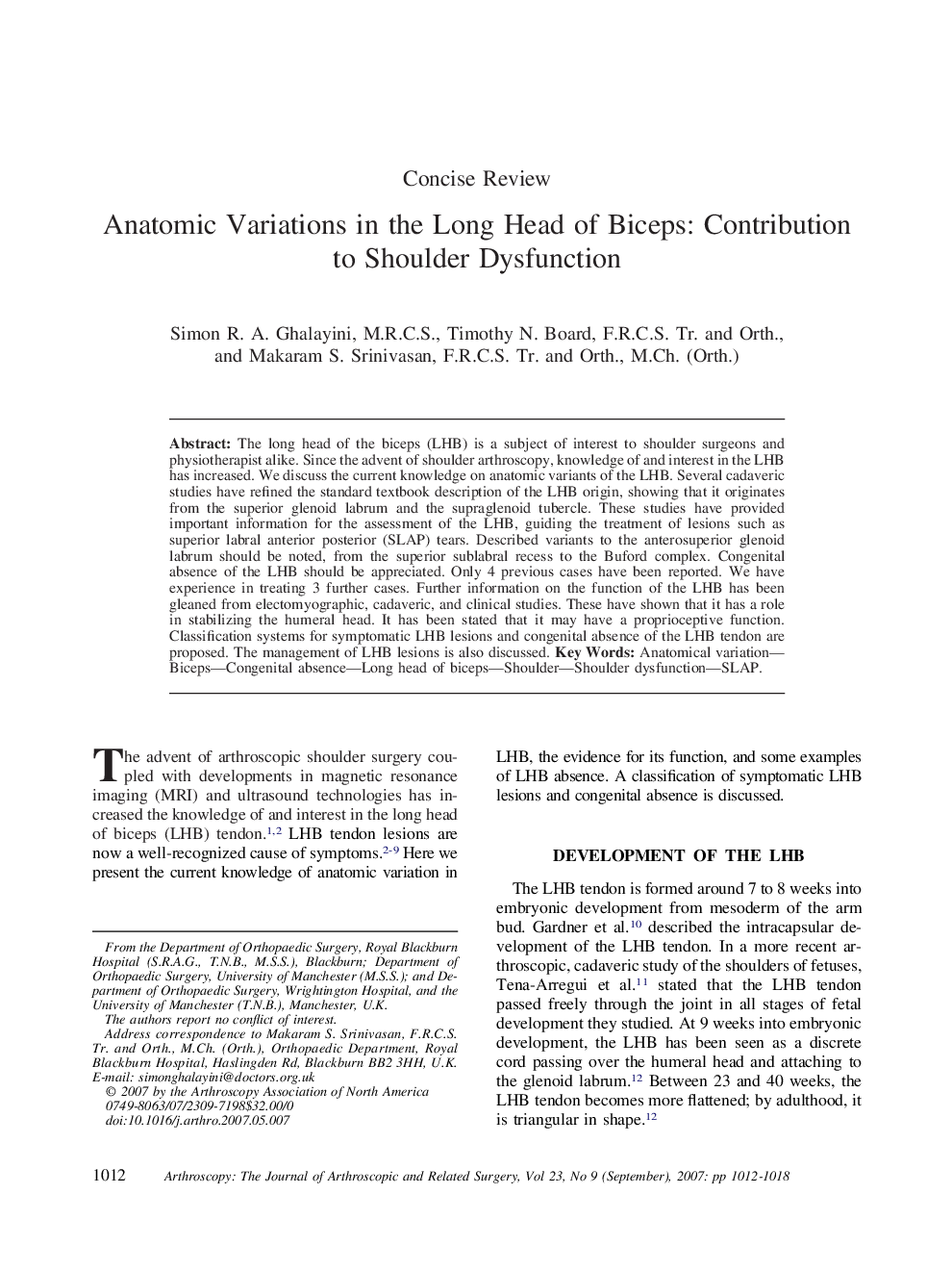| Article ID | Journal | Published Year | Pages | File Type |
|---|---|---|---|---|
| 4046648 | Arthroscopy: The Journal of Arthroscopic & Related Surgery | 2007 | 7 Pages |
The long head of the biceps (LHB) is a subject of interest to shoulder surgeons and physiotherapist alike. Since the advent of shoulder arthroscopy, knowledge of and interest in the LHB has increased. We discuss the current knowledge on anatomic variants of the LHB. Several cadaveric studies have refined the standard textbook description of the LHB origin, showing that it originates from the superior glenoid labrum and the supraglenoid tubercle. These studies have provided important information for the assessment of the LHB, guiding the treatment of lesions such as superior labral anterior posterior (SLAP) tears. Described variants to the anterosuperior glenoid labrum should be noted, from the superior sublabral recess to the Buford complex. Congenital absence of the LHB should be appreciated. Only 4 previous cases have been reported. We have experience in treating 3 further cases. Further information on the function of the LHB has been gleaned from electomyographic, cadaveric, and clinical studies. These have shown that it has a role in stabilizing the humeral head. It has been stated that it may have a proprioceptive function. Classification systems for symptomatic LHB lesions and congenital absence of the LHB tendon are proposed. The management of LHB lesions is also discussed.
